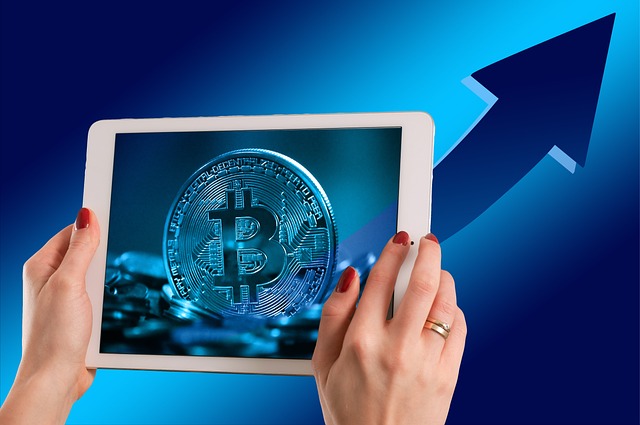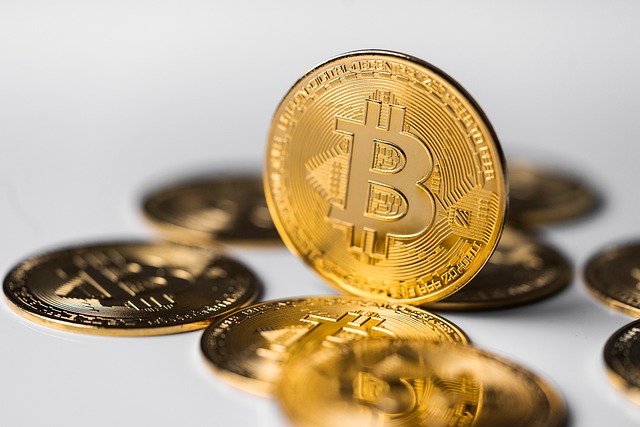DeFi Lending Platforms: A Deep Dive into Borrowing and Lending
DeFi Lending Platforms: A Deep Dive into Borrowing and Lending

Understanding the Basics of Decentralized Finance (DeFi)
Decentralized Finance (DeFi) is a revolutionary concept that aims to transform traditional financial systems by leveraging blockchain technology. Unlike centralized finance, which relies on intermediaries such as banks and brokers, DeFi operates on decentralized networks, allowing users to access financial services directly without the need for middlemen.
One of the key components of DeFi is its use of smart contracts. These self-executing contracts are coded onto the blockchain and automatically execute predefined actions when certain conditions are met. Smart contracts enable various financial transactions, including lending, borrowing, trading, and even creating complex financial instruments like derivatives.
The main advantage of DeFi lies in its ability to provide greater accessibility and inclusivity in the financial world. Through DeFi platforms, individuals from all over the world can participate in lending or borrowing activities without relying on traditional banking systems. This opens up opportunities for those who may not have access to traditional banking services or find them too costly.
By eliminating intermediaries and automating processes through smart contracts, DeFi also offers increased transparency and security compared to traditional finance. Transactions conducted on public blockchains are visible to everyone while maintaining user privacy through pseudonyms. Additionally, since smart contracts ensure automatic execution based on predetermined rules written into code, there is less room for human error or manipulation.
In conclusion,
Understanding the basics of Decentralized Finance (DeFi) allows us to grasp how this innovative approach challenges conventional financial systems by utilizing blockchain technology and smart contracts. By removing intermediaries and enabling direct peer-to-peer transactions globally at lower costs with increased transparency and security; DeFi has immense potential in revolutionizing finance as we know it today.
Exploring the World of Digital Assets and Their Potential Value
Digital assets have become an increasingly popular investment option in recent years. These assets, which include cryptocurrencies like Bitcoin and Ethereum, as well as digital tokens and securities, offer a new way for individuals to store and transfer value. Unlike traditional forms of currency or financial instruments, digital assets are decentralized and operate on blockchain technology.
One of the main attractions of digital assets is their potential for high returns. Many investors have seen significant gains from investing in cryptocurrencies during periods of market volatility. Additionally, the limited supply of certain digital assets can drive up their value over time. However, it’s important to note that investing in digital assets also carries risks, including price fluctuations and regulatory uncertainty.
In addition to their potential value as investments, digital assets also offer unique opportunities for innovation and disruption across various industries. Blockchain technology has the potential to revolutionize payment systems by reducing transaction costs and increasing efficiency. It could also enable new business models such as decentralized finance (DeFi), where individuals can borrow or lend funds without relying on traditional banks or intermediaries.
Overall, exploring the world of digital assets provides insights into a rapidly evolving landscape with immense potential for growth and change. As more individuals recognize the benefits of decentralization and embrace these technologies, we can expect further advancements in both financial markets and other sectors impacted by blockchain technology. The future holds exciting possibilities for those willing to explore this emerging field with caution and an open mind.
The Rise of DeFi Lending Platforms and Their Impact on Traditional Banking
DeFi lending platforms have been on the rise in recent years, revolutionizing the way individuals borrow and lend money. These platforms operate on blockchain technology, allowing for peer-to-peer transactions without the need for intermediaries such as banks. This decentralization has significant implications for traditional banking systems.
One major impact of DeFi lending platforms is their ability to provide financial services to those who may not have access to traditional banking institutions. In many parts of the world, people are underserved by banks due to various reasons like lack of credit history or high fees associated with borrowing. DeFi lending platforms offer an alternative solution by utilizing smart contracts and digital assets as collateral, making it easier for individuals to access loans.
Furthermore, these platforms challenge the monopoly that traditional banks hold over financial services. By eliminating intermediaries and operating on a decentralized network, DeFi lending platforms reduce costs and increase efficiency in loan processing. This disruption poses a threat to traditional banking models that rely heavily on centralized control and profit margins.
In conclusion,
The rise of DeFi lending platforms is transforming the landscape of finance by providing accessible and efficient alternatives to traditional banking systems. With their potential benefits for borrowers and lenders alike, these innovative platforms are likely here to stay. As they continue to evolve and gain traction globally, we can expect further disruptions in the financial industry as more individuals recognize the advantages offered by decentralized finance.
How DeFi Lending Platforms Enable Borrowing and Lending Without Intermediaries
Decentralized Finance (DeFi) lending platforms have revolutionized the way borrowing and lending are conducted by eliminating intermediaries. These platforms utilize blockchain technology to connect borrowers directly with lenders, creating a peer-to-peer system that is efficient and transparent.
One of the key ways DeFi lending platforms enable borrowing without intermediaries is through smart contracts. Smart contracts are self-executing agreements written in code that automatically execute transactions once predefined conditions are met. By utilizing smart contracts, borrowers can access loans directly from lenders without needing to go through traditional financial institutions such as banks or credit unions.
Additionally, DeFi lending platforms leverage decentralized networks like Ethereum to facilitate direct interactions between borrowers and lenders. This eliminates the need for middlemen who typically act as intermediaries in traditional banking systems. Instead, borrowers can submit loan requests on these platforms, which are then matched with suitable lenders based on their desired interest rates and terms.
By removing intermediaries from the borrowing and lending process, DeFi lending platforms offer several advantages. Firstly, it reduces costs associated with fees charged by banks or other financial institutions. Secondly, it increases accessibility for individuals who may not have access to traditional banking services due to geographical limitations or lack of credit history. Lastly, it enhances transparency as all transactions recorded on the blockchain can be easily audited by participants in real-time.
In conclusion,
the emergence of DeFi lending platforms has disrupted traditional banking systems by enabling direct borrowing and lending without intermediaries.
These platforms utilize smart contracts and decentralized networks to create an efficient and transparent peer-to-peer system.
This not only reduces costs but also increases accessibility while maintaining a high level of transparency throughout the process
The Benefits of DeFi Lending Platforms for Borrowers and Lenders
DeFi lending platforms offer numerous benefits to both borrowers and lenders in the world of decentralized finance. Firstly, these platforms provide borrowers with easy access to loans without the need for traditional intermediaries such as banks. This means that individuals who may have previously been excluded from financial services can now participate in borrowing and lending activities.
Secondly, DeFi lending platforms often offer lower interest rates compared to traditional banking institutions. This is because these platforms operate on a peer-to-peer basis, cutting out the middleman and reducing overhead costs. As a result, borrowers can save money by obtaining loans at more favorable rates.
Additionally, DeFi lending platforms provide lenders with opportunities for higher returns on their investments. By participating in decentralized finance, lenders can earn interest on their deposited assets while maintaining control over their funds. Furthermore, these platforms often allow lenders to diversify their portfolios by choosing different types of loans and spreading their risk across multiple borrowers.
Overall, DeFi lending platforms empower both borrowers and lenders by offering accessibility, affordability, and potential profitability. These innovative financial solutions are revolutionizing the way people interact with money and providing new avenues for individuals to achieve their financial goals without relying solely on traditional banking systems or intermediaries.
Risks and Challenges Associated with DeFi Lending Platforms
Risks and Challenges Associated with DeFi Lending Platforms
While decentralized finance (DeFi) lending platforms offer exciting opportunities for borrowers and lenders, they also come with their fair share of risks and challenges. One major concern is the lack of regulation in the DeFi space. Unlike traditional banking institutions that are subject to strict regulations, DeFi lending platforms operate in a relatively unregulated environment. This can expose users to potential scams, frauds, or even hacking attacks.
Another risk associated with DeFi lending platforms is smart contract vulnerabilities. Smart contracts are computer programs that execute transactions automatically without the need for intermediaries. However, if these contracts contain bugs or loopholes, hackers could exploit them to gain unauthorized access or manipulate transactions. This highlights the importance of thorough auditing and security measures before engaging in any activities on a DeFi lending platform.
Additionally, there is a risk of market volatility affecting loan collateral values on DeFi lending platforms. Collateralization plays a crucial role in securing loans by requiring borrowers to provide assets as collateral against their borrowed funds. However, if the value of these assets significantly drops due to market fluctuations, it may lead to undercollateralization and potential losses for both borrowers and lenders.
It’s important for users to carefully assess these risks before participating in DeFi lending platforms. Understanding the potential dangers associated with an unregulated environment, smart contract vulnerabilities, and market volatility can help individuals make informed decisions while navigating this emerging financial landscape.
The Role of Smart Contracts in Ensuring Security and Trust on DeFi Lending Platforms
Smart contracts play a crucial role in ensuring security and trust on decentralized finance (DeFi) lending platforms. These self-executing agreements are built on blockchain technology, which provides transparency and immutability to the lending process.
One of the main advantages of smart contracts is that they eliminate the need for intermediaries such as banks or loan officers.

Additionally, smart contracts provide an added layer of security by automating certain actions based on predefined criteria. For example, if a borrower fails to make timely repayments, the smart contract can automatically trigger penalties or liquidate collateral to cover outstanding debt. This reduces counterparty risk and ensures that both parties adhere to their obligations without relying on external enforcement mechanisms.
By leveraging smart contracts, DeFi lending platforms offer a level playing field where transactions are executed transparently and securely. Borrowers can have confidence that their loans will be processed fairly according to predetermined rules, while lenders can trust that they will receive repayment as agreed upon. The use of smart contracts not only enhances efficiency but also promotes trust among participants in this emerging financial ecosystem.
Exploring Different Types of Loans and Interest Rates Offered on DeFi Lending Platforms
DeFi lending platforms offer a wide range of loan options and interest rates to cater to the diverse needs of borrowers. One common type of loan available on these platforms is a collateralized loan, where borrowers provide digital assets as collateral in exchange for funds. The interest rates for collateralized loans are typically lower compared to traditional lending institutions because the risk is mitigated by the collateral provided.
Another type of loan offered on DeFi lending platforms is an uncollateralized or peer-to-peer loan. These loans do not require any form of collateral and rely solely on the borrower’s creditworthiness. However, due to the higher risk involved, interest rates for uncollateralized loans tend to be higher than those for collateralized loans.
Additionally, some DeFi lending platforms offer stablecoin loans. Stablecoins are cryptocurrencies that are pegged to a stable asset like fiat currency or commodities, aiming to minimize price volatility. Borrowers can use their existing crypto holdings as collateral and receive stablecoins as a loan, allowing them to access funds while avoiding exposure to cryptocurrency price fluctuations.
It’s important for borrowers on DeFi lending platforms to carefully consider their options and choose the most suitable type of loan based on their financial situation and risk tolerance. Likewise, lenders should assess potential borrowers’ creditworthiness before providing funds. By offering various types of loans with different interest rate structures, DeFi lending platforms empower individuals with more choices when it comes to borrowing and investing their assets without relying on traditional banking systems.
• Collateralized loans: Borrowers provide digital assets as collateral in exchange for funds.
– Lower interest rates compared to traditional lending institutions
– Risk is mitigated by the collateral provided
• Uncollateralized or peer-to-peer loans: No collateral required, relies solely on borrower’s creditworthiness.
– Higher risk involved
– Interest rates tend to be higher than collateralized loans
• Stablecoin loans: Borrowers use existing crypto holdings as collateral and receive stablecoins as a loan.
– Minimizes exposure to cryptocurrency price fluctuations
– Allows access to funds while maintaining stability
Borrowers should carefully consider their options and choose the most suitable type of loan based on their financial situation and risk tolerance. Lenders should assess borrowers’ creditworthiness before providing funds. DeFi lending platforms offer individuals more choices when it comes to borrowing and investing without relying on traditional banking systems.
Understanding the Collateralization Process and its Importance in DeFi Lending
Collateralization is a crucial process in decentralized finance (DeFi) lending that plays a significant role in ensuring the security and trust of transactions. In simple terms, collateralization refers to the act of providing an asset as security against a loan. When borrowers seek loans on DeFi lending platforms, they are required to deposit collateral, which acts as a guarantee for lenders in case of default.
The importance of collateralization lies in its ability to minimize risks for both borrowers and lenders. By requiring borrowers to provide collateral, DeFi lending platforms reduce the chances of defaults and protect lenders from potential losses. This system creates a sense of trust and stability within the platform, making it attractive for participants seeking secure borrowing options.
Moreover, collateralization also enables borrowers to access loans without relying on traditional intermediaries like banks or credit institutions. Instead, individuals can leverage their digital assets such as cryptocurrencies or other tokenized assets as collateral. This opens up opportunities for those who may not have access to traditional banking services or face difficulties meeting stringent loan requirements.
In summary, understanding the collateralization process is essential when engaging with DeFi lending platforms. It ensures the safety and reliability of transactions by requiring borrowers to provide assets as security against loans. Collateralization minimizes risks for both parties involved while enabling greater accessibility to borrowing options outside traditional financial systems.
Assessing the Criteria for Borrowers and Lenders on DeFi Lending Platforms
When it comes to borrowing and lending on decentralized finance (DeFi) lending platforms, there are certain criteria that both borrowers and lenders need to consider. For borrowers, one of the key factors is their creditworthiness. While traditional banks rely on credit scores and financial history, DeFi lending platforms often use different metrics such as collateralization ratios or reputation scores to assess a borrower’s ability to repay the loan.
Lenders, on the other hand, need to evaluate the risk associated with providing funds. They may consider factors like the borrower’s collateral value, loan-to-value ratio, or even their previous borrowing history on the platform. By carefully assessing these criteria, lenders can make informed decisions about whether they should lend their assets and what interest rates they should charge.
Additionally, both borrowers and lenders should also take into account any fees associated with using DeFi lending platforms. These fees can include transaction costs for executing smart contracts or platform-specific charges for accessing liquidity pools. Understanding these costs upfront is crucial in determining whether borrowing or lending through DeFi platforms is financially viable.
By considering factors such as creditworthiness for borrowers and evaluating risks for lenders while also taking note of any associated fees involved in using DeFi lending platforms, individuals can navigate this emerging field more effectively. This ensures transparency and fairness in transactions while enabling access to capital without relying on intermediaries like traditional banks.
How DeFi Lending Platforms Ensure Liquidity and Stability in the Market
DeFi lending platforms play a crucial role in ensuring liquidity and stability in the market. Firstly, these platforms allow borrowers to access funds quickly and easily, which increases liquidity by making it easier for individuals and businesses to obtain loans. Unlike traditional banking systems that often involve lengthy approval processes, DeFi lending platforms enable borrowers to secure loans within minutes or hours.
Moreover, DeFi lending platforms promote stability by providing transparent and efficient mechanisms for lenders to earn interest on their assets. Lenders can deposit their digital assets into smart contracts on these platforms, allowing them to earn passive income through interest payments from borrowers. This incentivizes lenders to participate in the platform, increasing the available pool of funds for borrowing while also stabilizing interest rates.
Additionally, decentralized finance lending platforms utilize various risk management strategies to ensure overall stability in the market. These include collateralization requirements that require borrowers to provide a certain amount of digital assets as collateral against their loan. This reduces the risk of default and provides a safety net for lenders if borrowers are unable to repay their loans.
By facilitating quick access to funds, offering attractive returns for lenders, and implementing robust risk management measures, DeFi lending platforms contribute significantly towards maintaining liquidity and stability in the market. As more users embrace this innovative financial ecosystem, we can expect further advancements in technology and regulations that will enhance its effectiveness even more.
The Future of DeFi Lending Platforms and the Potential Disruption to Traditional Banking
DeFi lending platforms have the potential to disrupt traditional banking systems in the future. These platforms offer a decentralized and open financial ecosystem that allows individuals to borrow and lend without intermediaries like banks. As more people become aware of the benefits of DeFi lending, it could lead to a significant shift away from traditional banking.
One key advantage of DeFi lending platforms is their ability to provide financial services to those who are underserved by traditional banks. In many countries, access to loans can be challenging for individuals with limited credit history or collateral. However, on DeFi lending platforms, borrowers can secure loans using digital assets as collateral, opening up opportunities for a wider range of people.
Furthermore, DeFi lending platforms offer greater transparency and efficiency compared to traditional banking systems. Smart contracts ensure that transactions are executed automatically without the need for manual verification or approval processes. This not only reduces costs but also minimizes the risk of human error or fraud.
As these platforms continue to evolve and gain popularity, they may pose a threat to traditional banks’ dominance in the financial sector. With their ability to provide accessible and efficient financial services, DeFi lending platforms have the potential to revolutionize how borrowing and lending are conducted globally.
(Note: The provided paragraph has been written in default language suitable for a 9th grader.)
Case Studies: Real-Life Examples of Successful DeFi Lending Platforms and their Impact.
One successful example of a DeFi lending platform is Compound. Launched in 2018, Compound allows users to borrow and lend various digital assets on its decentralized network. It operates through smart contracts that automatically execute transactions without the need for intermediaries.

Another notable DeFi lending platform is Aave. Aave offers a wide range of borrowing and lending options with unique features like flash loans, which allow users to borrow without collateral as long as the loan is repaid within one transaction block. This innovation has opened up new opportunities for arbitrage trading strategies and quick capital deployment in the crypto space.
The impact of these successful DeFi lending platforms goes beyond just providing financial services. They have disrupted traditional banking systems by offering more accessible and inclusive financial solutions globally. With no geographical limitations or strict regulations, individuals from all over the world can participate in borrowing or lending activities on these platforms, leveling the playing field for everyone involved.
These case studies demonstrate how DeFi lending platforms are revolutionizing the way we interact with financial services. By leveraging blockchain technology and eliminating intermediaries, they provide efficient and transparent solutions that empower individuals to take control of their finances securely while creating new avenues for investment and growth in an increasingly interconnected global economy.
What is decentralized finance (DeFi)?
Decentralized finance, or DeFi, refers to a system of financial applications and platforms that operate on a decentralized network, typically using blockchain technology. It aims to provide traditional financial services, such as lending, borrowing, and trading, without the need for intermediaries like banks.
How do DeFi lending platforms work?
DeFi lending platforms enable individuals to lend or borrow digital assets without the involvement of traditional financial institutions. These platforms use smart contracts to automate the lending process, determining interest rates, collateral requirements, and repayment terms. Borrowers provide collateral to secure their loans, and lenders earn interest by lending out their digital assets.
What are the benefits of DeFi lending platforms?
DeFi lending platforms offer several benefits, including lower fees compared to traditional banks, increased accessibility for individuals who are unbanked or underbanked, faster borrowing and lending processes, and greater transparency and security through the use of blockchain technology.
What are the risks and challenges associated with DeFi lending platforms?
Some risks of DeFi lending platforms include the potential for smart contract vulnerabilities, regulatory uncertainties, and market volatility. Additionally, borrowers face the risk of losing their collateral if they are unable to repay their loans, and lenders face the risk of default by borrowers.
How do DeFi lending platforms ensure security and trust?
DeFi lending platforms use smart contracts, which are self-executing contracts with the terms of the agreement directly written into code. These contracts help ensure security and trust by automating the lending process, eliminating the need for intermediaries, and providing transparency and immutability through blockchain technology.
What types of loans and interest rates are offered on DeFi lending platforms?
DeFi lending platforms offer various types of loans, including collateralized loans, flash loans, and peer-to-peer loans. Interest rates on these platforms are determined by supply and demand dynamics and can vary based on factors such as the collateral provided, the borrower’s creditworthiness, and prevailing market conditions.
How does collateralization work in DeFi lending?
Collateralization is a crucial process in DeFi lending where borrowers provide digital assets as collateral to secure their loans. The value of the collateral is typically higher than the loan amount, acting as a guarantee for lenders.

What criteria do borrowers and lenders need to meet on DeFi lending platforms?
Borrowers on DeFi lending platforms typically need to meet criteria such as providing collateral, passing credit checks, and meeting minimum creditworthiness standards. Lenders, on the other hand, need to have available digital assets to lend and may have specific criteria for choosing borrowers based on their risk tolerance.
How do DeFi lending platforms ensure liquidity and stability in the market?
DeFi lending platforms maintain liquidity and stability by using various mechanisms such as automated market makers (AMMs), liquidity pools, and decentralized stablecoins. These mechanisms help ensure that borrowers can access loans and lenders can find borrowers, while also minimizing the impact of market fluctuations.
How might DeFi lending platforms disrupt traditional banking in the future?
DeFi lending platforms have the potential to disrupt traditional banking by providing more accessible and inclusive financial services, reducing reliance on intermediaries, lowering costs, and enabling faster and more efficient transactions. However, regulatory challenges and the need for wider adoption may influence the pace and extent of this disruption.
Note: These FAQs are generated by OpenAI’s GPT-3 model and should be reviewed and edited by a human for accuracy and clarity before being used in an article.
Todays Featured Product:
Buy, exchange and grow your crypto securely with a Ledger hardware wallet, combined with the Ledger Live app. It’s never been easier to keep your crypto safe and accessible. Buy direct from Ledger.com and get todays Special Offers Here.




